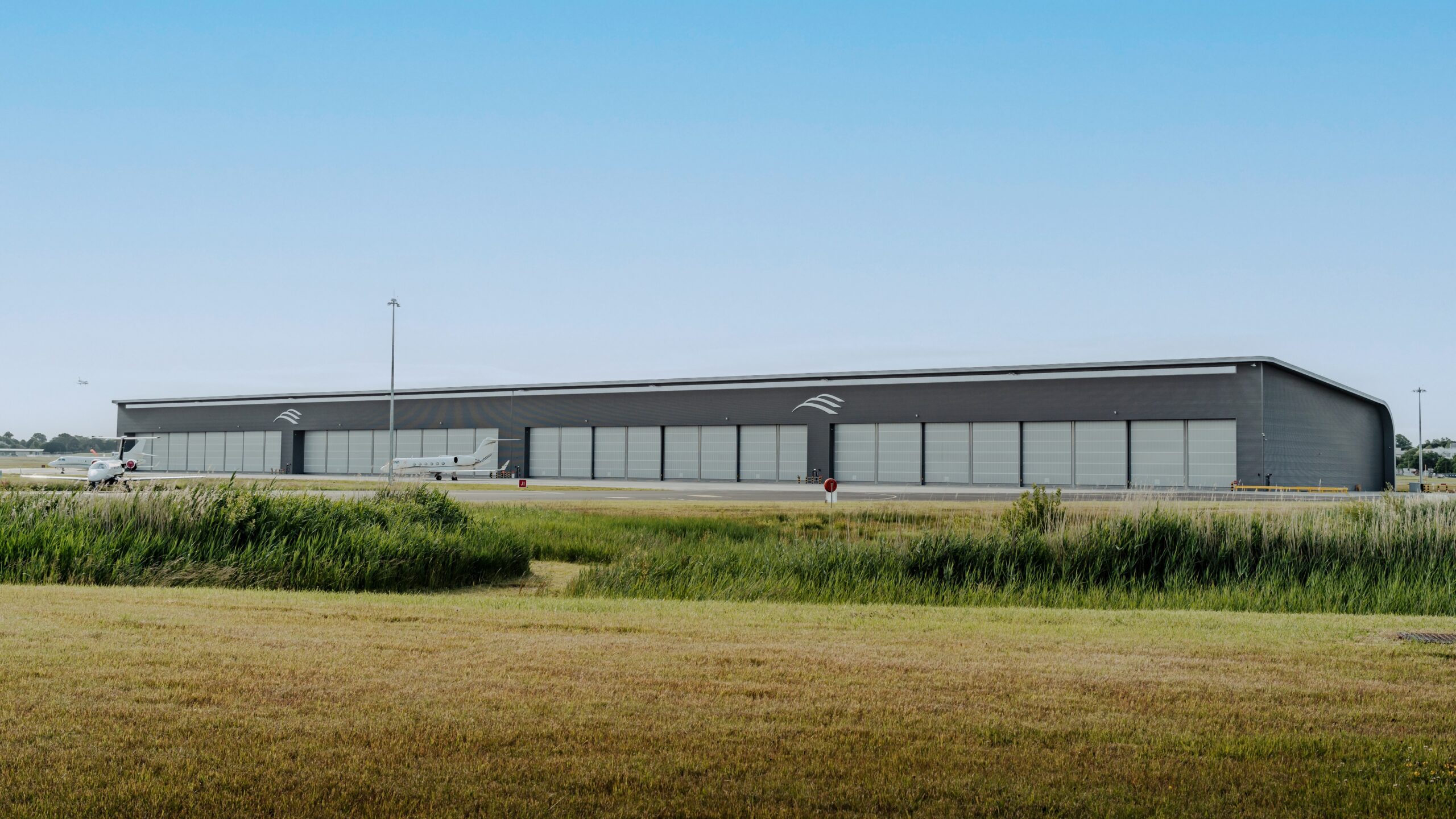£55m project opens on time and within budget to increase the airport’s hangar capacity by over 70%.
McLaughlin & Harvey and Gebler Tooth are pleased to announce the opening of Domus III, a new 175,000 sq. ft. four-bay hangar designed and built for Farnborough Airport.
This project marks a significant step for the airport, enhancing services and improving the customer experience, whilst having sustainability at the heart of its design.
Domus III spans 300 meters and is positioned parallel to the runway. The hangar features translucent automated doors that run the entire building length, optimising natural light and reducing the need for artificial lighting.
The door design allows for large, unobstructed access, improved aircraft manoeuvrability and helping to reduce unnecessary emissions from aircraft handling activities, whilst safeguarding for future long-haul aircraft, currently in development by various manufacturers.
We are very pleased to have delivered another project at Farnborough Airport to help them in their journey towards a more efficient and sustainable future. This project underscores our commitment to working with the world’s best airports and supporting them on their growth and journeys towards Net Zero.
Andrew Jacob
Associate Director at Gebler Tooth
As the construction partner for the development of Domus III, we were able to draw on our experience in the aviation and industrial sectors to deliver a premium hangar space in 18 months after breaking ground. There was great collaboration and commitment between all partners to ensure that the correct planning was in place to hit construction milestones in the middle of a live airport environment without any impact to the airport’s day-to-day operations.
Dougie McCusker
Construction Director at McLaughlin & Harvey
Sustainable features of Domus III include:
- Intelligent Lighting System: Incorporates daylight dimming to maximise energy efficiency.
- Symphonic Rainwater Harvesting System: A 280-meter-long system to collect and utilise rainwater, reducing water consumption.
- Eco-friendly Heating Systems: Designed to minimise environmental impact.
- Integrated Building Control and Energy Monitoring: Ensures optimal energy usage and reduces operational costs.
Additionally, the construction included improvements to the surrounding aprons and taxiways, staged to minimise disruption to the airport’s operations.
